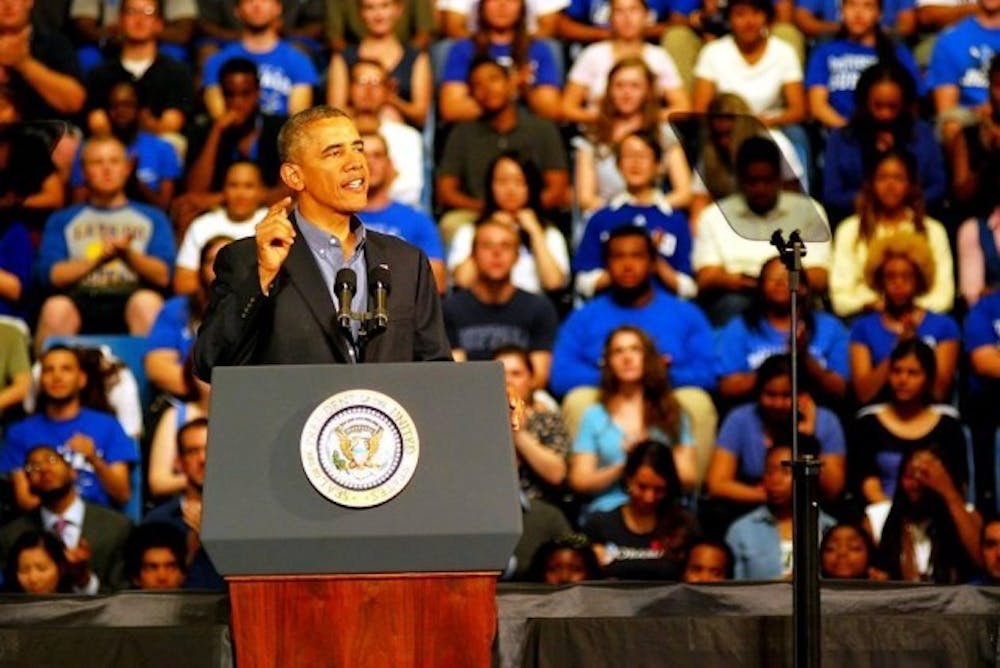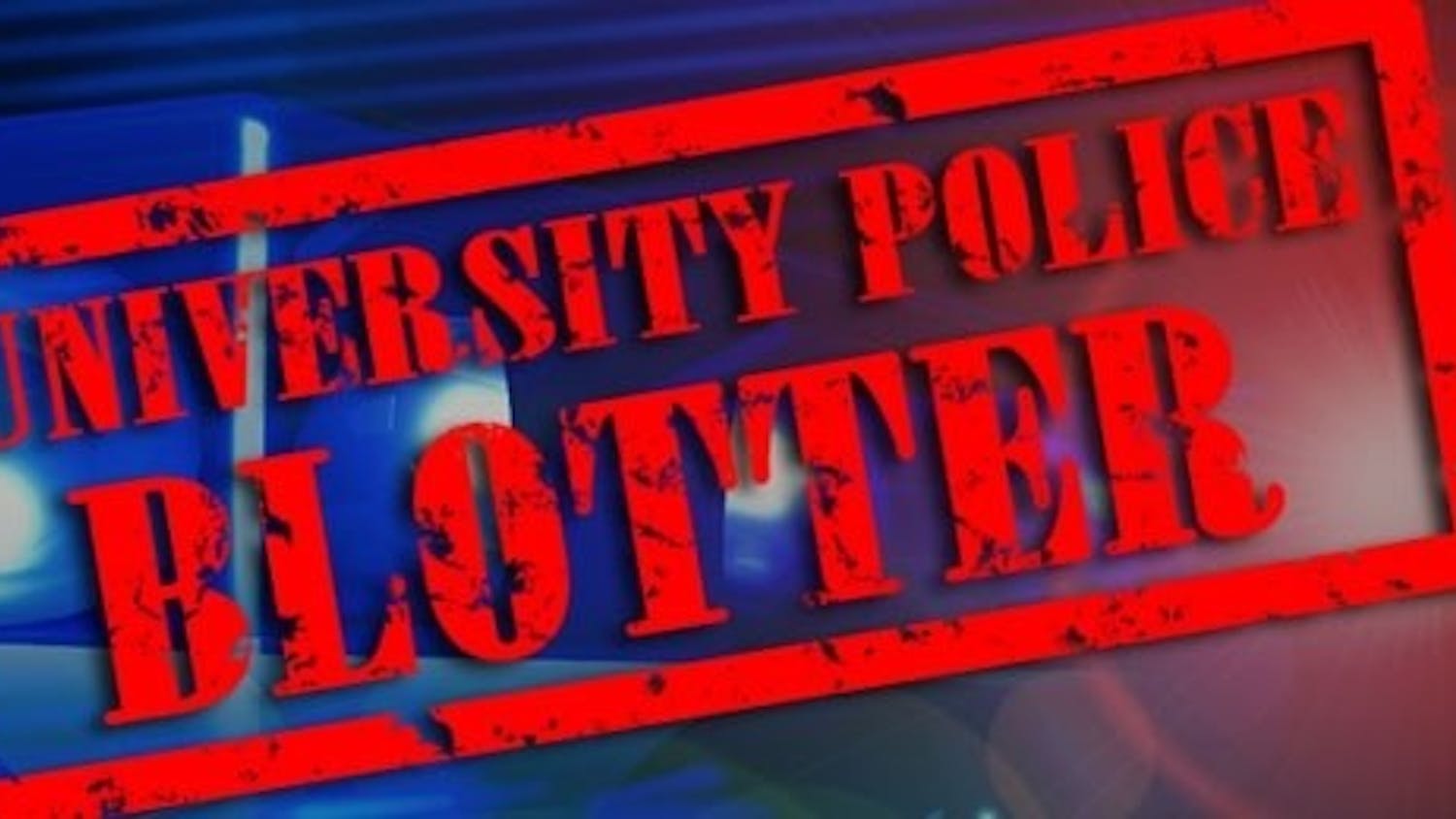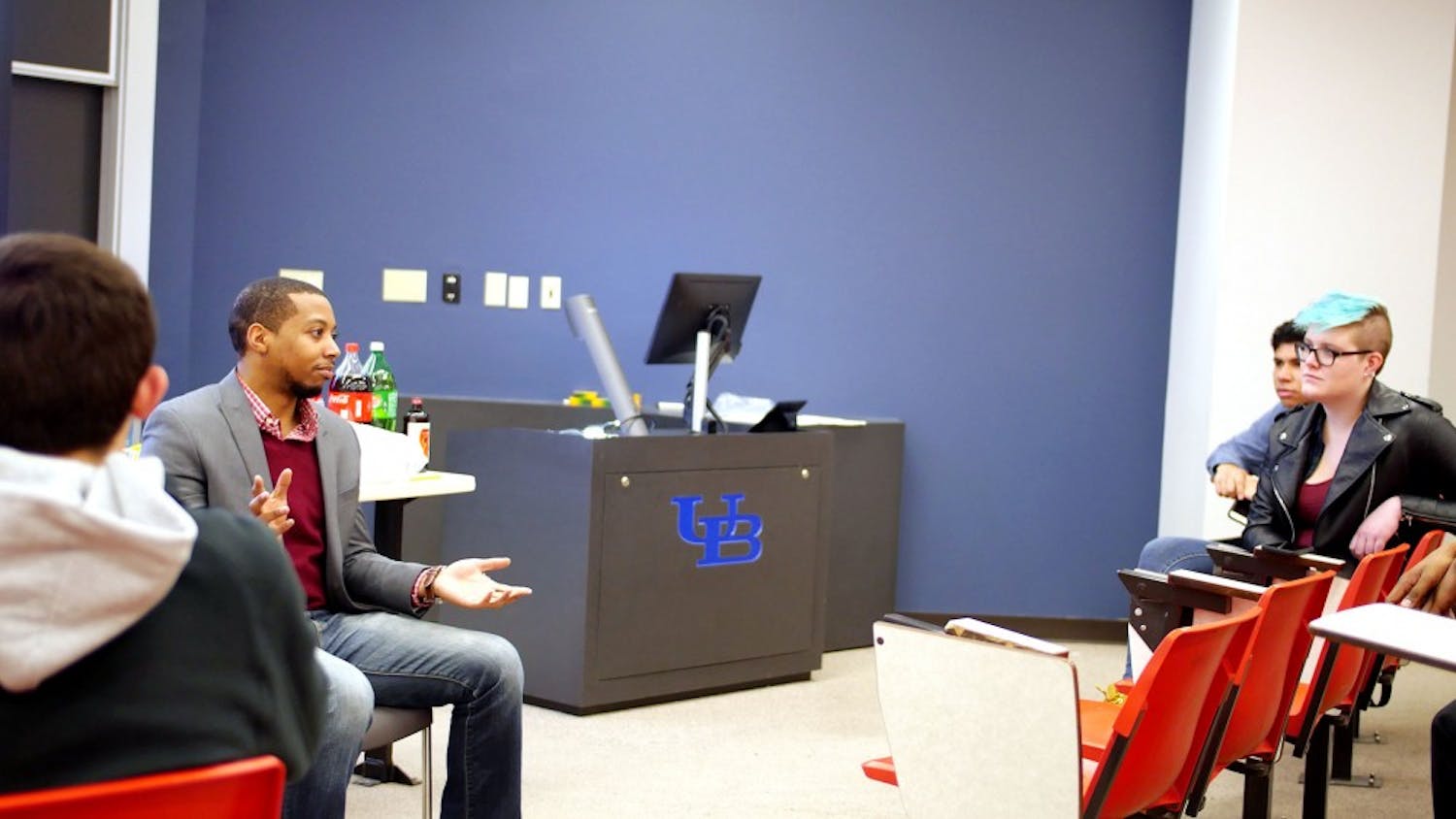This afternoon, President Barack Obama addressed a roaring crowd of 7,200 people - 5,000 students - at Alumni Arena in a speech that lasted roughly 30 minutes. Obama spoke primarily on his increasing concerns about the future of higher education, calling the current direction a "crisis."
He also reaffirmed the importance of strengthening the middle class. He said the first step to fulfilling this goal is reforming the current state of higher education.
Over the last 30 years, tuition costs have increased 250 percent while family income has only increased 16 percent, he said. The average student who takes out student loans now graduates owing more than $26,000, according to the president.
Obama's proposed solution: new reforms that will "shake up the current system, create better incentives for colleges to do more with less and deliver better value for students and their families."
The president said higher education has never been more important or expensive than it is now. Too many students are facing a choice they should never have to make, according to Obama: Say no to college and pay the price for not getting a degree, or get a degree but run the risk of not being able to pay off the debt.
"Now, that's a choice we shouldn't accept," Obama said. "And, by the way, that's a choice that previous generations didn't have to accept. This is a country that early on made a commitment to put a good education within the reach of all who are willing to work for it."
His plan has three parts. First, change the way colleges are ranked. Second, jumpstart competition between colleges in terms of innovation. And third, make sure college is more affordable for current students and those now taking on crippling debt from their undergraduate degrees.
He said some aspects of the plan he can accomplish himself, but others will require action from Congress, a notion that was met with subtle - but clear - laughter from the audience. He said state legislatures must have a big role in making these changes happen.
Obama also called on the students to, in return, work as hard as they can to earn degrees.
Although his plan was clear and straightforward and his enthusiasm was almost contagious, Obama told the crowd that reforming higher education won't be easy.
Altering the college ranking system
The president said the current system of private rankings of colleges and universities, like U.S. News and World Report, encourages schools to focus on the numbers and how to increase their rank instead of the needs of the students.
Under Obama's new system, which he and Secretary of Education Arne Duncan hope to implement by 2015, colleges will be ranked by opportunity and how well they help students from all kinds of backgrounds succeed. The value of the education and the affordability will be the chief concerns of the ranking system.
Other questions will include: "How much debt does the average student leave with? How easy it is to pay off? How many students graduate on time? How well do those graduates do in the workforce?"
The answers to these questions will allow students and parents to find the most valuable education instead of the most prestigious university, he said.
"We are going to deliver on a promise we made last year, which is colleges that keep their tuition down and are providing high-quality education are the ones that are going to see their taxpayer funding go up," Obama said. "It is time to stop subsidizing schools that are not producing good results, and reward schools that deliver for American students and our future."
Finding innovative ways to be cost-effective
Obama stressed the importance of keeping tuition costs down without sacrificing the quality of education. He listed a series of universities embracing this philosophy.
Some universities, like Southern New Hampshire University and the University of Wisconsin, are giving students course credit based on how well students learn the material instead of the amount of time spent in the classroom. The program is designed to allow students to learn the material fast, which will help them to finish their degrees faster and ultimately save them money in the long-run.
Central Missouri University is teaming up with local high schools to get students college credit before entering college, allowing them to graduate quicker and to save money.
Other schools like Carnegie Melon University and Arizona State University have found that students can master the same material in less time and often at a lower cost. Georgia Institute of Technology announced it will begin offering an online master's degree program in computer science that costs $6,000 - a fraction of the on-campus cost of $45,000.
Under Obama's efforts to reform higher education, these schools' efforts will be rewarded with various incentives.
"A lot of other schools are experimenting with these ideas to keep tuition down," Obama said. "They've got other ways to help students graduate in less time, at less cost, while still maintaining high quality. The point is, it's possible. And it's time for more colleges to step up with even better ways to do it. And we're going to provide additional assistance to states and universities that are coming up with good ideas."
Lowering tuition and minimizing student debt
Obama made it clear his goal was to lower tuition costs while increasing the quality of education. He added that affordability didn't only apply to students currently enrolled in college - but also those struggling to pay off post-undergraduate debt.
"Here's the bottom line," Obama said. "Government shouldn't see student loans as a way to make money; it should be a way to help students. We need to ask ourselves: How much does a federal student loan cost students? How can we help students manage those costs better?
"Our national mission is not to profit off student loans; our national mission must be to profit off having the best educated workforce in the world. That should be our focus."
Obama has already taken steps to lower tuition costs. He created the program "Pay-As-You-Earn," which caps the percentage of what a student owes after college at 10 percent of his or her annual income. He said the program and other income-driven plans have helped more than 2.5 million students so far.
He also pointed out two obstacles standing in the way of helping students pay off their debt. First, many students aren't eligible for these programs, so he is encouraging Congress to take action in increasing eligibility. Second, many students don't know they are eligible for these programs, so it's important they understand how to take advantage of these resources.
Obama assured the audience that his three-part plan is his main priority. He emphasized it as the stepping-stone to revitalizing the middle class.
Toward the end of his speech, almost every sentence was followed with roaring applause, each louder than the previous one.
"We're going to keep moving forward on this issue, and on every issue that's going to help make sure that we continue to have the strongest, most thriving middle class in the world," Obama said as the crowd cheered with approval. "We're going to keep pushing to build a better bargain for everybody in this who works hard and everybody who's trying to get into that middle class.
"And we're going to keep fighting to make sure that this remains a country where, if you work hard and study hard and are responsible, you are rewarded, so that no matter what you look like and where you come from, what your last name is, here in America, you can make it if you try."
Buffalo was the first stop on Obama's two-day tour. Later, he visited Henninger High School in Syracuse to talk about the decreasing high school graduation rates. Tomorrow, he is scheduled to appear at SUNY Binghamton and then Lackawanna College in Scranton, Penn.





